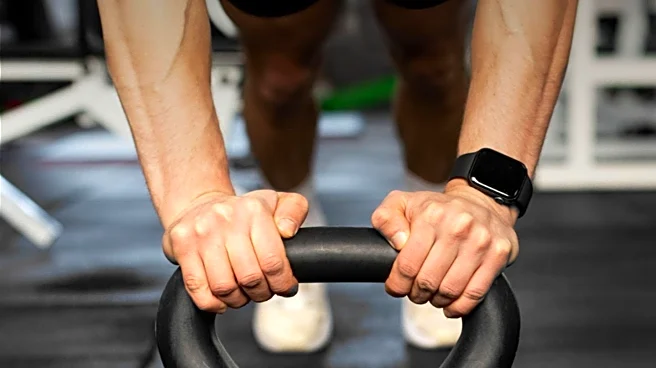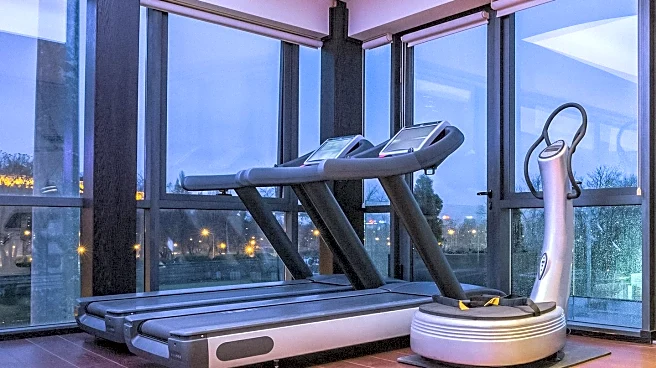What's Happening?
Julie Powers, a menopause coach and personal trainer, emphasizes the importance of dynamic stretching before engaging in brisk or long walks. According to Powers, dynamic stretching can prime muscles and joints
for exertion, boost performance, and prevent injuries. She highlights the need for preparing the body, especially in colder weather or for individuals who spend significant time seated. Powers recommends specific exercises such as calf raises with ankle rolls, deficit calf raises, leg swings, and walking hip circles to enhance stride mobility and endurance. These exercises are designed to warm up muscles, lubricate joints, and increase blood flow, making them ideal for pre-walk routines.
Why It's Important?
Dynamic stretching is crucial for individuals who engage in fitness walking, as it helps prevent muscle fatigue and injury. By warming up the body, walkers can improve their endurance and energy levels, allowing for longer and more effective workouts. This approach is particularly beneficial for those carrying additional weight, such as backpacks or weighted vests, as it eases the transition to more intense physical activity. The emphasis on dynamic rather than static stretching aligns with current fitness trends that prioritize movement-based preparation over static holds, which are more suited for post-exercise recovery.
What's Next?
As awareness of the benefits of dynamic stretching grows, more fitness enthusiasts may incorporate these exercises into their routines. Trainers and fitness programs might increasingly advocate for dynamic stretching as a standard practice before engaging in any form of physical activity, especially walking. This shift could lead to a broader understanding of exercise preparation, potentially influencing public health recommendations and fitness guidelines.
Beyond the Headlines
The focus on dynamic stretching reflects a broader trend in fitness towards personalized and adaptive exercise routines. As individuals seek to optimize their workouts, understanding the nuances of muscle preparation and recovery becomes essential. This development may also influence the design of fitness equipment and apparel, catering to the needs of those who prioritize dynamic movement and flexibility.











